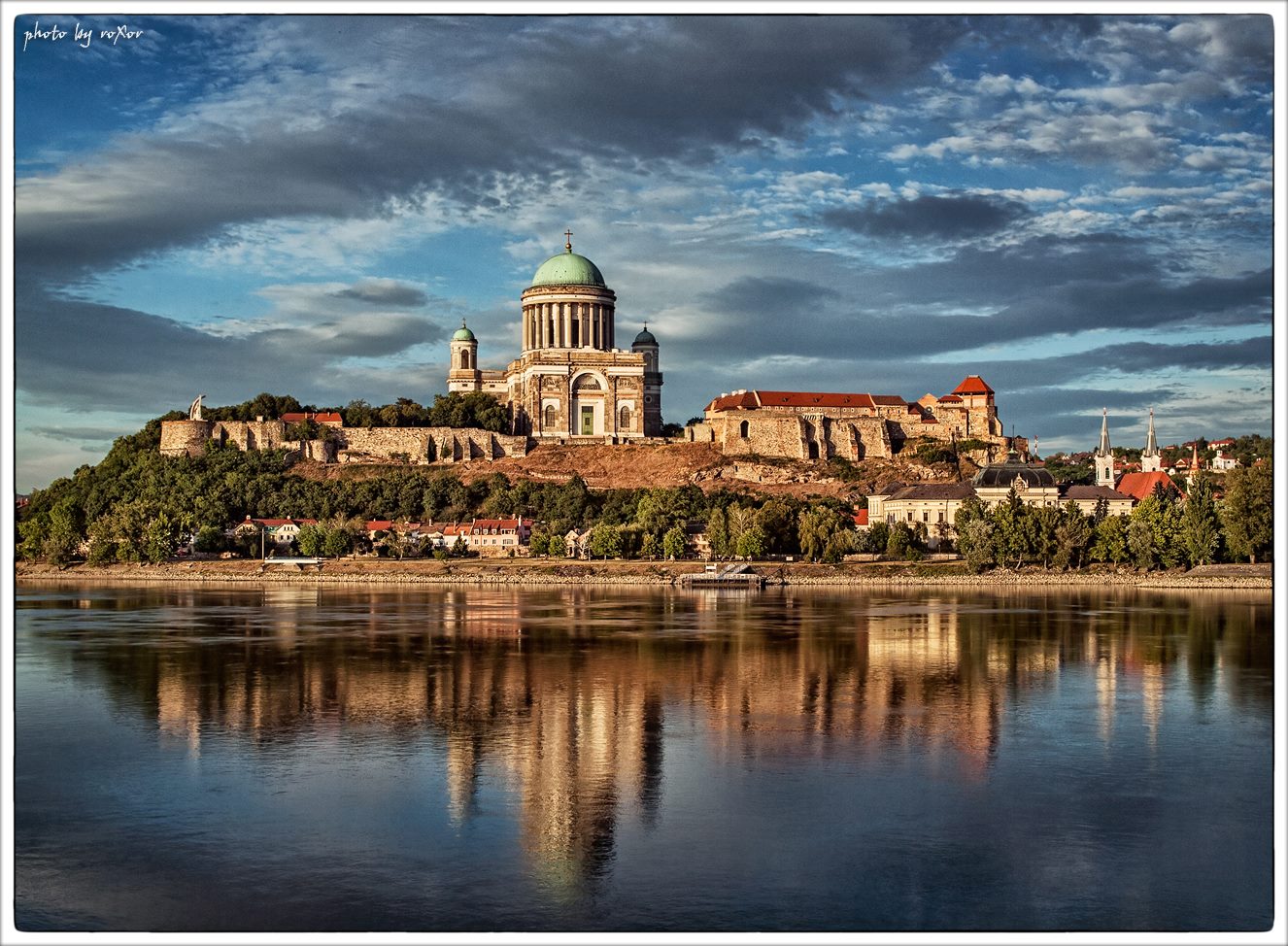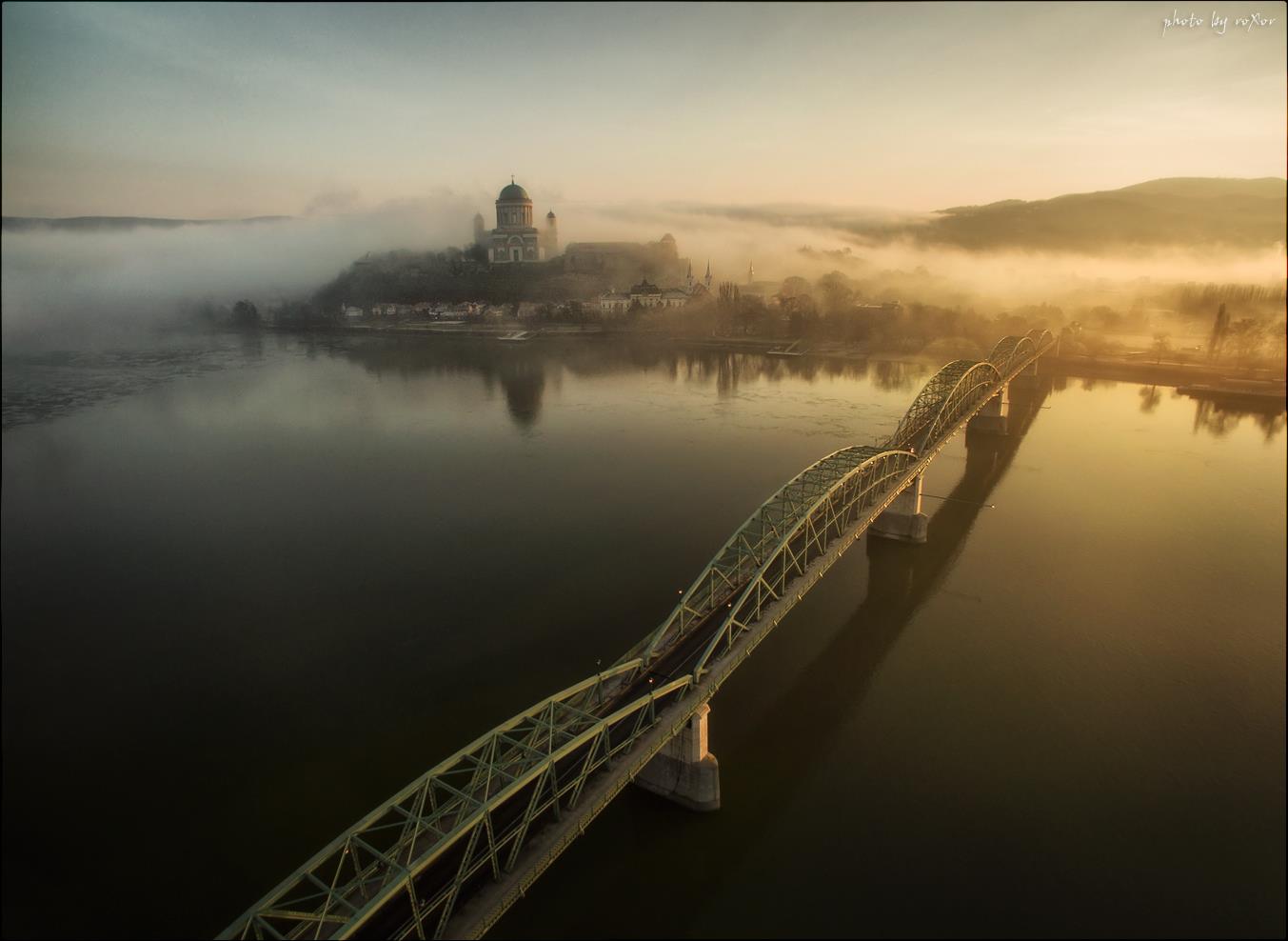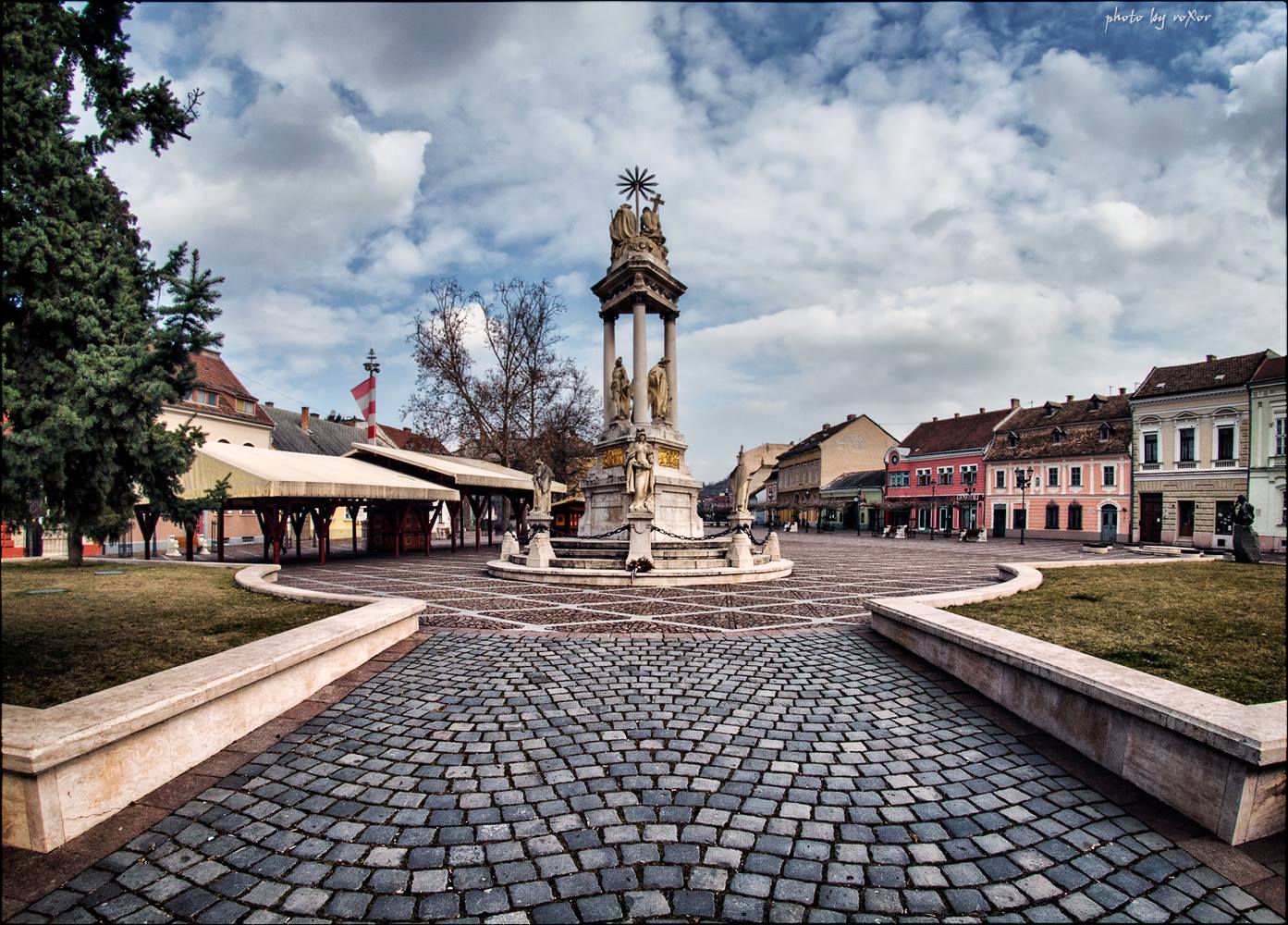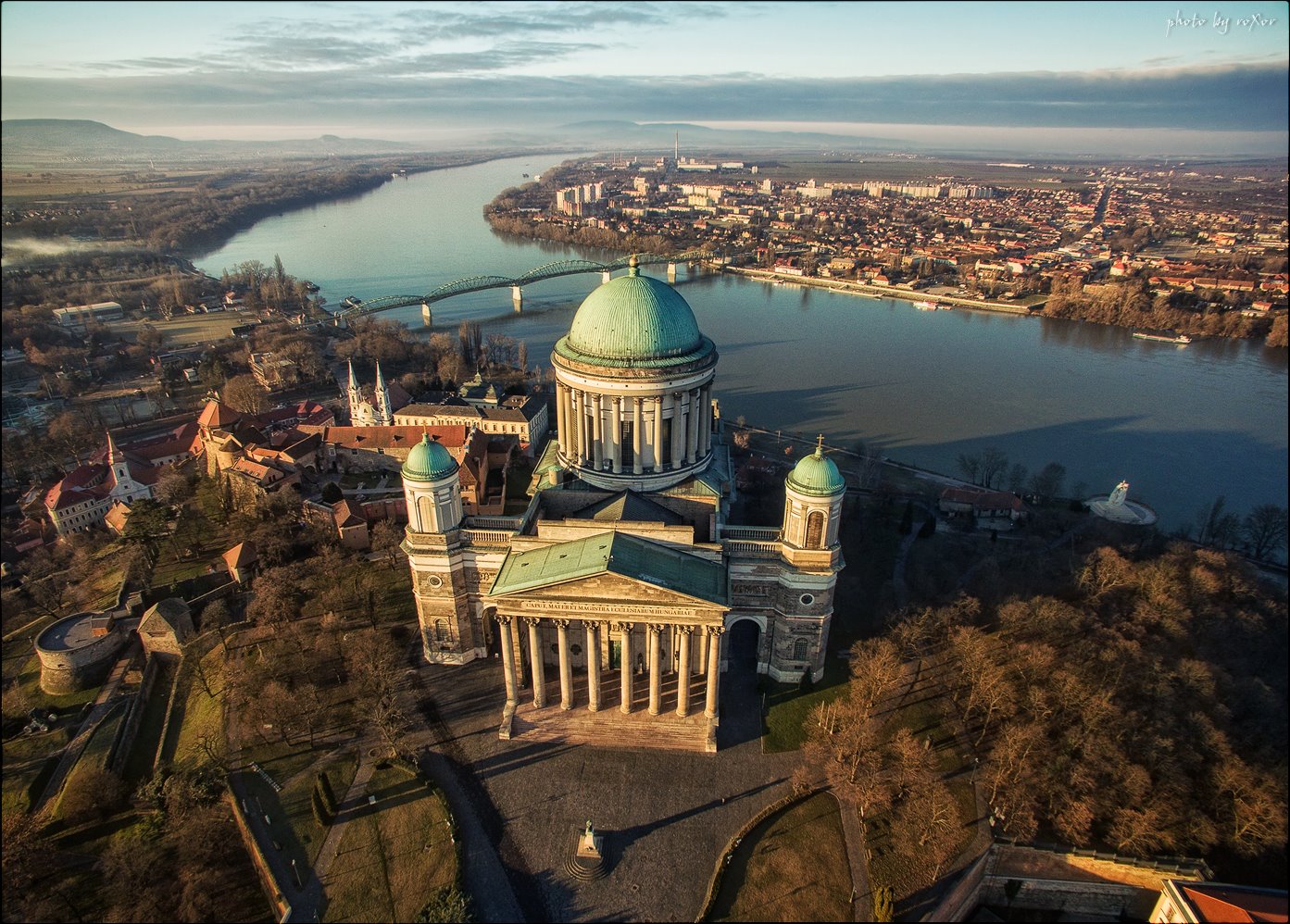Sights to see
Esztergom Basilica and Castle Hill

The Castle Hill is the main tourist attraction of Esztergom. Established around 972 AD, Esztergom has always played an important role in Hungary's history. It was the birth and coronation place of the first Hungarian king, St. Stephen, as well as the capital of Hungary until the 13th century.
The seat of the Catholic Church in Hungary was built on the site of the first cathedral in the country, where the first Hungarian King St. Stephen was crowned in 1000 AD. Rebuilt during the 1800s in Neo-Classicist style, this is the largest church in Hungary. The Basilica of Esztergom is depicted on the 10,000 HUF banknote.
Dark Gate (Sötétkapu)

The Dark Gate is a more than 80m long corridor under the Castle Hill's artifical slope, which was built in front of the Basilica. Finished in 1824, in Classicist style. From the tunnel we can get to a huge cellar system inside the Hill.
Esztergom Basilica
The left chapel of the church was originally built as a sepulchral chapel for archbishop Tamás Bakócz in 1507. It miraculously survived during the Ottoman occupation, being disassembled to 1600 pieces and then rebuilt in the new main church. This way, it was saved for posperity and now it is Europe's northernmost, intact Renaissance chapel.
Crypt
The huge crypt, built in Old Egyptian style in 1831, is today the resting place of late archbishops, among others, József Mindszenty, famous for his opposition to both Nazi and Communist rule.
Treasury
It has many masterpieces of medieval goldsmith's works. The western European masters hands are praised by such items as the crown silver cross that has been used since the 13th century, the ornate chalices, Francesco Francia’s processional cross, the upper part of the well-known ‘Matthias-Calvary’ which is decorated in the rare ronde-bosse enamel technique, also there is a vast collection of traditional Hungarian and European textiles, including chasubles, liturgical vestments and robes.
Cupola lookout
It is worth visiting in good weather because we can see even the Tatra mountains in Slovakia. Almost 400 steps lead up to the dome's balcony from the entrance of the basilica. In the southern tower of the Basicila the 5800kg heavy Nagyboldogasszony bell can be seen, which is the third biggest bell in Hungary.
Castle Museum
 The castle was built on ancient Roman foundations. Its permanent and temporary exhibitions are in seven rooms and on the Castle Hill. Four permanent exhibitions can be found here:
The castle was built on ancient Roman foundations. Its permanent and temporary exhibitions are in seven rooms and on the Castle Hill. Four permanent exhibitions can be found here:
Centuries of Esztergom
Decorative Weapons collection of the Hungarian National Museum
History of the Hungarian coinage
Stone Storage (Lapidarium) - it is Hungary's richest Romanesque and Gothic carved stone collection.
Maria Valeria Bridge
 It was first bridge connecting the Prímás Island, Esztergom and the Slovakian Sturovo city was established in 1895. It was named after the daughter of Franz Josef I, Mária Valéria Archduchess. During World War II, retreating German troops blew up the bridge on 26 December 1944 along with other bridges near Esztergom. Decades of intransigence between the Communist governments of Hungary and Czechoslovakia meant that the bridge was not rebuilt until the new millennium, finally reopening on 11 October 2001.
It was first bridge connecting the Prímás Island, Esztergom and the Slovakian Sturovo city was established in 1895. It was named after the daughter of Franz Josef I, Mária Valéria Archduchess. During World War II, retreating German troops blew up the bridge on 26 December 1944 along with other bridges near Esztergom. Decades of intransigence between the Communist governments of Hungary and Czechoslovakia meant that the bridge was not rebuilt until the new millennium, finally reopening on 11 October 2001.
Széchenyi square

Esztergom's main square was rebuilt and totally renovated in 2006. It became a walking street, most buildings got new, catering duties. Statues of Maria Theresa and Duke Géza were finished as well as the Ister Fountain. The buildings surrounding the square - for example the Mayor's House, got decorative lights.
Saint Thomas Hill
 We can reach the hill through a Baroque style calvary. The Classicist chapel on the top of the hill was built in 1823. The hill was named after a church built by Bishop Lukács Bánffy in memoriam the martyr Saint Thomas Becket. In front of the chapel there is a monumental sculpture group,- Virgin Mary, Saint János, Mary Magdalene. We can enjoy the wonderful view of the city, as well as the Basilica.
We can reach the hill through a Baroque style calvary. The Classicist chapel on the top of the hill was built in 1823. The hill was named after a church built by Bishop Lukács Bánffy in memoriam the martyr Saint Thomas Becket. In front of the chapel there is a monumental sculpture group,- Virgin Mary, Saint János, Mary Magdalene. We can enjoy the wonderful view of the city, as well as the Basilica.
Ozitseli Hadji mosque
It was built on the ruins of the medieval tower Veprech. In 1239 it was the northest stronghold of the city. The tower was rebuilt several times over the years. The upper part of the tower converted into a mosque with a minaret, in 17th century, under the Ottoman occupation. Now, the Ozitseli mosque part of a residential house and the Minaret is missing.
Christian Museum
 It is the world's third-largest diocesan museum after the Vatican and Munich (Freising) and the biggest ecclestial collection in Hungary. The museum is in the Primate's Palace in the Watertown part of town. The permanent exhibitions include: Hungarian, Austrian and German late Gothic painting and sculpture (15th-16th centuries), Italian Renaissance and Baroque painting (13th-18th centuries), Hungarian, Austrian and German Baroque painting (17th-18th centuries), Flemish painting (15th-16th centuries), Tapestries (15th-20th centuries), collection of Orthodox icons and metalwork (16th-20th centuries).
It is the world's third-largest diocesan museum after the Vatican and Munich (Freising) and the biggest ecclestial collection in Hungary. The museum is in the Primate's Palace in the Watertown part of town. The permanent exhibitions include: Hungarian, Austrian and German late Gothic painting and sculpture (15th-16th centuries), Italian Renaissance and Baroque painting (13th-18th centuries), Hungarian, Austrian and German Baroque painting (17th-18th centuries), Flemish painting (15th-16th centuries), Tapestries (15th-20th centuries), collection of Orthodox icons and metalwork (16th-20th centuries).
Website: http://www.keresztenymuzeum.hu/



